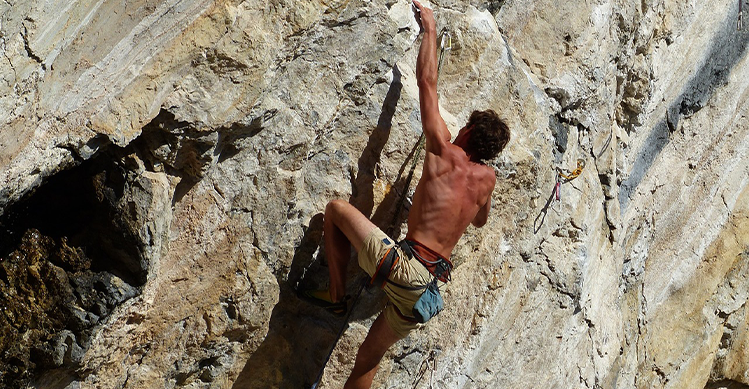
THE IMPORTANCE OF CLIMBING GRADES
The grade of the routes is important in climbing practice to identify the difficulty of each route and to be able to climb safely. It is essential for climbers who seek to progress to be able to measure the level of activity as in any other sport.
This level of difficulty is associated with values within the different grading scales used to identify routes with the level of skill or training load that the climber seeks.
FACTORS INVOLVED IN THE GRADING OF ROADS
The grades within a scale are the way we have to identify the level of difficulty of a climbing route or boulder.
The factors that affect the grade of a road
On Routte:
- Wall inclination.
- The size and shape of the holds used to progress.
- The size and shape of the holds used to progress.
- The length of the route.
- The difficulty of the movements required to complete the route.
Off Routte:
- The weather at the time of the climb.
- The wear and tear of the holds over time.
- The opinion of climbers who repeat the route and give their opinion on the difficulty level.
Related to the morphology of each climber:
- Each climber has a different body from another climber.
- Height.
- Arm length.
- Leg length.
- Diminished physical abilities.
THE GRADING OF CLIMBING ROUTES IS SUBJECTIVE
Any of these factors make the grading of a climbing route very subjective. And even more so with factors that refer to the morphology of the climber. This topic has been a subject of debate especially in routes of high difficulty and great popularity. In rock climbing, it is a topic that continues to open many debates. However, in indoor climbing, within climbing gyms, Lizcore® System has provided the solution that opens the doors to personalized grading of the level of routes in the climbing gym.
HOW ARE GRADES ASSIGNED IN ROCK CLIMBING?
The grades of climbing routes are assigned by experienced climbers who have climbed that route or even the route setter. They are climbers with enough experience and knowledge to assess the difficulty of the route.
Generally, climbers who assign grades to routes are experts in a particular type of climbing and are familiar with the climbing style, rock type, and terrain characteristics. Often, climbers work together to evaluate a route and agree on a consensus grade.
In some cases, it is the climber who makes the first ascent of the route (first ascent FA) or the route setters who assign the grade. Subsequent climbers who climb the route may propose a grade, which can be reviewed and confirmed by other experienced climbers.
The difficulty of a route can be affected by external factors. Therefore, the grades of rock climbing routes may change over time as new ascents are made and more information about the route is acquired.
GRADUATION AL THE CLIMBING GYM
Inside a climbing gym, it is the routesetters who shape and define the type of climbing for each route or boulder problem. They are responsible for grading their own routes.
Routesetters typically assign difficulty grades based on their own perception of the route’s difficulty, drawing on their experience, skills, and technical knowledge. Some route setters may also seek the input of other experienced climbers to establish the difficulty grade of the route.
It is important to keep in mind that grades are subjective and can vary from one setter to another, so it is possible for two routesetters to assign different grades to the same route. Therefore, the grade of a route in a climbing gym should be taken as a general guide and not as an absolute measure of difficulty.
ROCK CLIMBING AND INDOOR CLIMBING GRADUATION
In the outdoors, a general consensus is sought within the local climbing community or by using the 8a.nu database. Whereas in indoor climbing routes, the grade is assigned by a professional route setter.
We must take into account this difference and understand that the difficulty level of a rock climbing route can be more reliable based on the number of climbers who can intervene depending on the popularity of the route. However, this does not mean underestimating the work of routesetters within climbing gyms, where routes are regularly equipped and disassembled.
The grades are based on the perceived difficulty of the route and can vary from one climbing gym to another.
CUSTOMIZED DEGREE ARRIVES TO CLIMBING

Lizcore® System is an ambitious climbing gym management system that includes route difficulty grading as one of its services. This new system has been developed by a group of climbers with the goal of enhancing the climbing experience within the gym.
One of the great advantages of Lizcore® System is that it offers a dynamic and scalable grading system. Unlike other grading systems, which are often inflexible and do not adjust to the morphology of climbers.
The Lizcore® System adapts to each climber by analyzing their morphology. This means that climbers can tackle routes of the specific grade they are seeking to improve their skills and find challenging routes that match their skill level.
If you are a climbing gym manager, a professional route setter, or a user of climbing walls, the Lizcore® System is definitely something you should know about.
